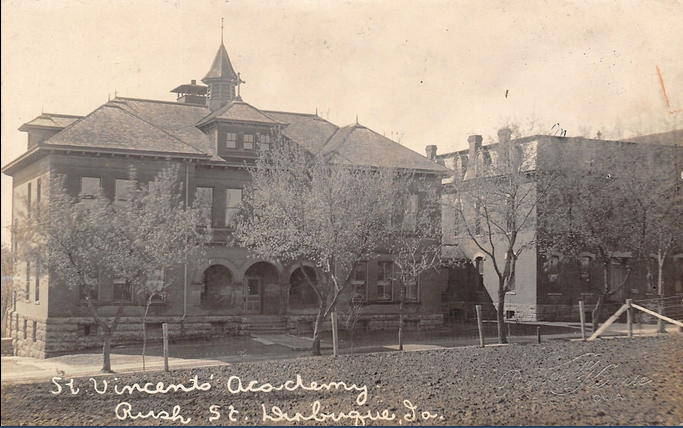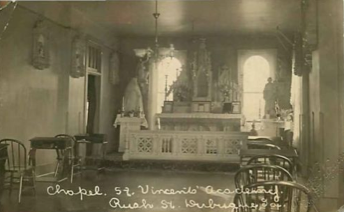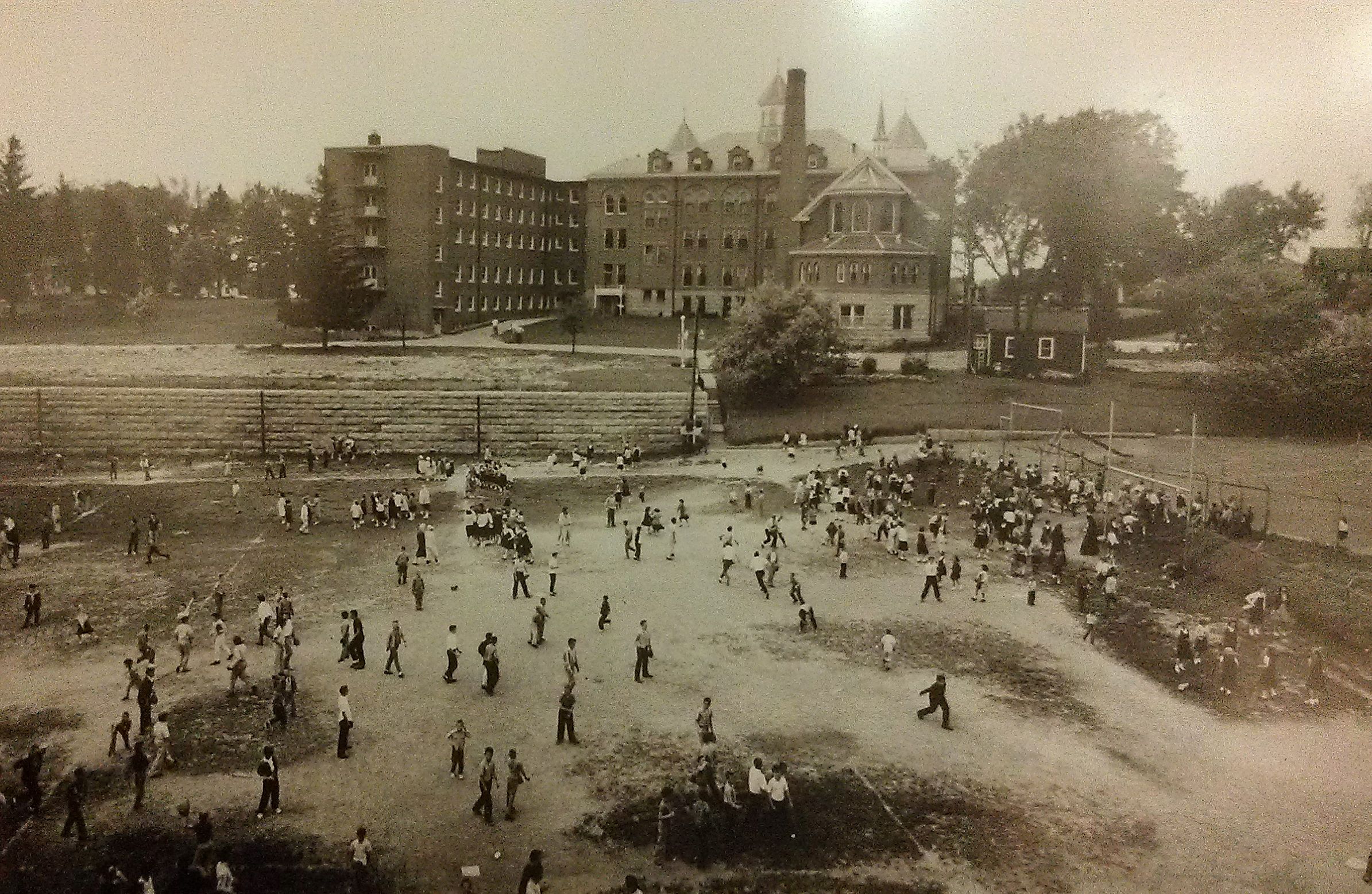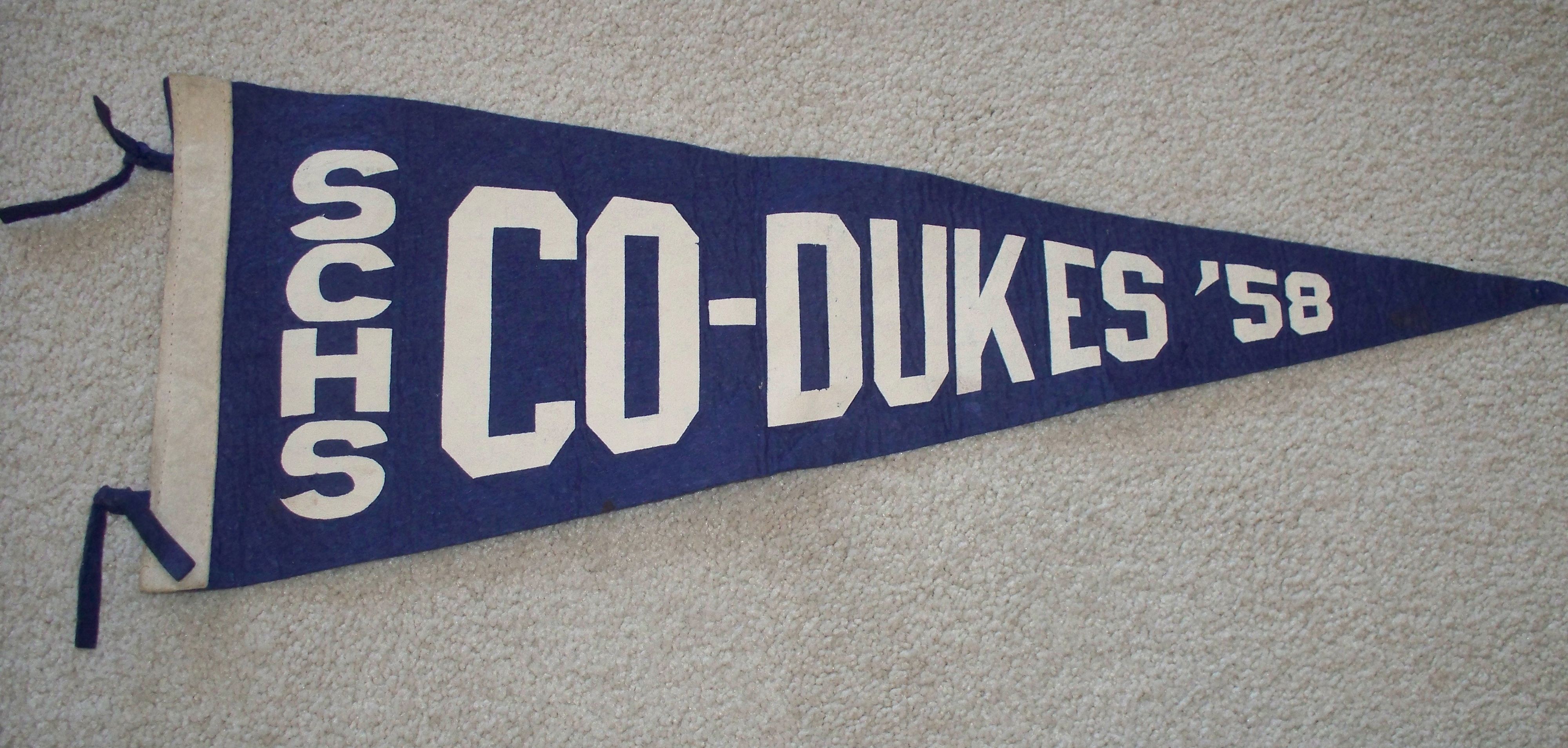Encyclopedia Dubuque
"Encyclopedia Dubuque is the online authority for all things Dubuque, written by the people who know the city best.”
Marshall Cohen—researcher and producer, CNN
Affiliated with the Local History Network of the State Historical Society of Iowa, and the Iowa Museum Association.
ST. VINCENT'S ACADEMY
ST VINCENT'S ACADEMY. Founded in 1879, eight years prior to the formation of St. Columbkille's parish, St. Vincent's was established by the SISTERS OF THE PRESENTATION OF THE BLESSED VIRGIN MARY (PBVM) and named in honor of Mother Mary Vincent Hennessy, founder of the Presentation Sisters in Iowa.
Work on the school was started during the spring of 1879. Because the building was only half finished at the beginning of September, classes had to be held in the residence of John Fitzpatrick on South Dodge (Bryant) Street. (1) Classes were finally able to enter the building on December 15th. (2)
Four Sisters from Key West opened classes on September I, 1879, to forty students. The enrollment increased so rapidly that two more Sisters joined the faculty within one week. When classes were moved in December to the new school on Rush Street the boys were instructed on the first floor and the girls on the second. (3) of twenty-five cents was charged for each child.
An addition to the school was made in 1898. This building, later called St. Columbkille's Apartments, was constructed east of the older building. The two were linked by a one-story breezeway. (4) St. Vincent's began taking in boarding students as well as the neighborhood day students in 1909. (5) In 1913 the average daily attendance was 200. (6) The space for them to stay was made available when the sisters moved to their own residence, Mt. Loretta Mother House (later the Archdiocesan Pastoral Center and Seminary).
Another addition, a three-story building, connected the school's two parts. This was constructed in 1914 and allowed for a high school to open in 1917. (7) In 1917 accreditation was received from the Iowa Committee on Secondary Schools, but only girls were admitted. This building was destroyed by fire but was quickly rebuilt. (8)
By the 1920s, enrollment had become a problem. The elementary school enrollment peaked in 1913 with 317 students but fell to 162 in 1929. Part of the problem was that St. Vincent's was tuition-dependent, the only school of its kind in the city. (9) In September, 1929 St. Columbkille Parish agreed to assume the financial support and operation of the primary school and make it tuition-free. In 1930 ST. COLUMBKILLE CATHOLIC CHURCH purchased St. Vincent's the elementary and high school for $35,000. One of the first changes was to allow boys to enroll in the high school. (10) The first class with boys graduated in 1935.
Enrollment the elementary and high school soared. Elementary school attendance peaked at 942 in 1959. High school graduates rose from less than 30 in the 1930s to nearly 60 in the 1950s until the opening of WAHLERT CATHOLIC HIGH SCHOOL. (11)
Following the purchase of the school, Pastor John Halpin oversaw the development of recreational and athletic opportunities. Football and girls' basketball teams were established. Dunn Field was developed along the back of the parish property. Football games were played in the fall of 1947. A school playground was finished in 1949. (12)
Increasing enrollment led to plans in 1954 for a new elementary building allowing the use of the original building for the high school. With the construction of Wahlert and the phasing out of St. Columbkille High School, it became possible for the junior high classes to remain in the old school. Construction of the new school began on May 11, 1956 and classes were first held in the building in September 1957. Increasing enrollments led to the construction of a second floor on the new building in 1962. (13)
Until the mid-1970s, junior high classes were still located in the old building. Declining school population made it possible to move these students to the new building. In 1982 the old building was without school-aged students for the first time since 1879. (14)
The old school was renovated in 1982 for multiple uses. The 1898 addition was converted to apartments. The building was also used to house of the parish offices. St. Columbkille kindergarten classes were held in the remodeled basement floor. Annual retreats for Christian Experience Weekends found the classrooms and sleeping quarters useful. Holy Catholic Schools at the beginning of the 21st century administered a pre-school and daycare in the building. (15)
Consolidation in 2001 and 2006 resulted in all sixth, seventh, and eighth grade students being relocated to Mazzuchelli Middle School on the campus of Wahlert High School. During the same time, HOLY FAMILY CATHOLIC SCHOOLS decided to retain three K-5 Catholic schools within the city. One of these was to be located at St. Columbkille. (15)
---
Source:
1. Koch, Kevin. Saint Columbkille Catholic Church, Strasbourg, France: Editions du Signe, 2011, p. 9
2. Ibid.
3. Ibid.
4. Ibid.
5. Ibid.
6. "Education is Centered in City of Dubuque," Telegraph Herald, May 23, 1913, p. 45
7. Ibid., p. 10
8. Ibid.
9. Ibid. p. 23
10. Ibid.
11. Ibid.
12. Ibid. p. 25
13. Ibid. p. 29
14. Ibid.
15. Ibid., p. 33
16. Ibid., p. 37





